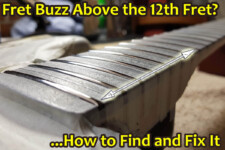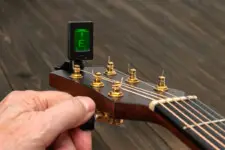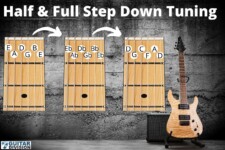Guitar Out of Tune With Capo? (Why It Happens & How to Fix)
There can be a number of reasons why using a capo can make your guitar’s tuning sound off, from the setup of your guitar to the actual capo itself.
Clamping a capo on the strings can show up problems with your guitar that were not apparent before, and if you don’t have the right capo for your guitar it could sound out of tune or have buzzing strings.
If you have a capo that makes your guitar sound out of tune, then it could be causing your frets to wear down faster than they should. To prevent damage to your guitar and get it sounding right with a capo you need to know what to look for.

Why Your Guitar Can Be Out of Tune With a Capo
1. Capo Is Too Tight
This is probably the number one reason why a guitar will sound out of tune with a capo, as the strings will sound sharp when they are squeezed down with too much pressure.
When the strings are pushed down too hard they stretch in-between the frets slightly, and the extra tension raises the pitch of the string.
2. Capo is not Placed Correctly
A capo should be placed on the neck just a little behind the fret you want the strings to touch, and should be placed in a direct line with the frets (not slanted).
If a capo is too far behind the fret you can get buzzing strings, and if the capo is too far on top of the fret you can get muted strings.
3. Action (String Height)
If your strings are too high off the fretboard, the capo will push the strings a long way down until they touch the frets. This causes the same problem as a capo being too tight, and causes the strings to sound sharp.
The main place you will notice this is down in the first 2 – 3 frets if the nut slots are holding the strings too high off the frets. If your capo makes the guitar sound sharp at the first few frets but sounds fine further up the neck, then the nut height is the likely cause.
4. Incorrect Neck Relief (Truss Rod Adjustment)
If your guitar neck bows down too far a capo can make it sound out of tune when placed on frets 5 or higher, but still sound fine on lower frets.
With the neck bowed too much the strings are higher off the fretboard in the center, and the capo causes too much tension on the strings there, causing them to sound sharp.
If your guitar neck bows upward in the middle you will get buzzing, and the strings could even touch frets further up the fretboard from the capo. This problem would apparent even without a capo.
5. Worn or Uneven Frets
If your guitar has been played plenty, then the frets might be getting worn on the tops (especially where the high strings are), and this can change the pitch when holding the string on that fret.
The tuning problem is not always apparent when playing normally, but when you place a capo on the guitar you can get a few strings mis-tuned at the same time, which is more noticeable.
6. A Warped Neck
Some guitars over time can develop a warped neck if they are not stored correctly, and this twisting of the neck can cause strings to rest on the wrong fret when a capo is placed on the neck.
This problem is less common than other issues, and if you look down the neck from the end you will be able to see if this is a problem on your guitar.
Does a Capo Change the Tuning?
A guitar is not tuned to a key to begin with, so strictly speaking a capo does not change the tuning. Every string will be raised by the same interval, so the relative pitch of each string stays the same.
This being said, if you play a D chord (for example),then place a capo on the 2nd fret and play the D chord two frets higher, it will now be an E chord.
So in effect, a capo allows you to play the same open chords you already know, and turn them into higher chords in the scale.
This can be very useful when a singer has a higher pitch to the song you learnt, as you can change the pitch up to match the singer without learning a new chord sequence.
Since a capo allows you to play open chords at a higher pitch, you can keep the original chord voicing that you know, keeping closely to the original sound you had lower down the fretboard.
Do You Have to Retune When Using a Capo?
You should not have to re-tune your guitar when using a capo if the capo has the correct tension.
If your guitar is setup correctly and you are having tuning issues due to a tight capo, then you could tune with the capo on to adjust for this problem. Just note if you do this your guitar will be out of tune when you take the capo off again!
How Tight Should My Capo Be?
Here’s where many guitarists have a capo tuning problem, and it’s because a capo should only squeeze down the strings as tightly as your fingers would to play the guitar normally.
Any tighter and you will start to hear tuning problems as the capo will be stretching the strings and raising their pitch sharp enough for your ears to notice, and you won’t like the sound!
How Do You Know if a Capo Is Good?
Any capo that has good rubber protection on it to protect your guitar from damage can be a good capo. However, a non-adjustable capo that works well on one guitar might not work so well on another.
Guitars have different thickness necks, especially if you compare an acoustic guitar to an electric guitar, and so a simple spring-loaded capo could be too tight on some guitars.
Your safest option if you are buying a new capo is to get one that can be adjusted, and then you can make it fit any guitar neck properly.
Capo’s are mostly designed to suit either an electric guitar or an acoustic guitar. An electric guitar capo will have a lighter spring since electric guitar strings have much less tension than steel string acoustic guitars.
Another option is to take your guitar to a shop, and ask them to assist you in finding a spring-loaded capo that fits your guitar correctly.
Here are a few good quality capos to show you what kind of options you have:
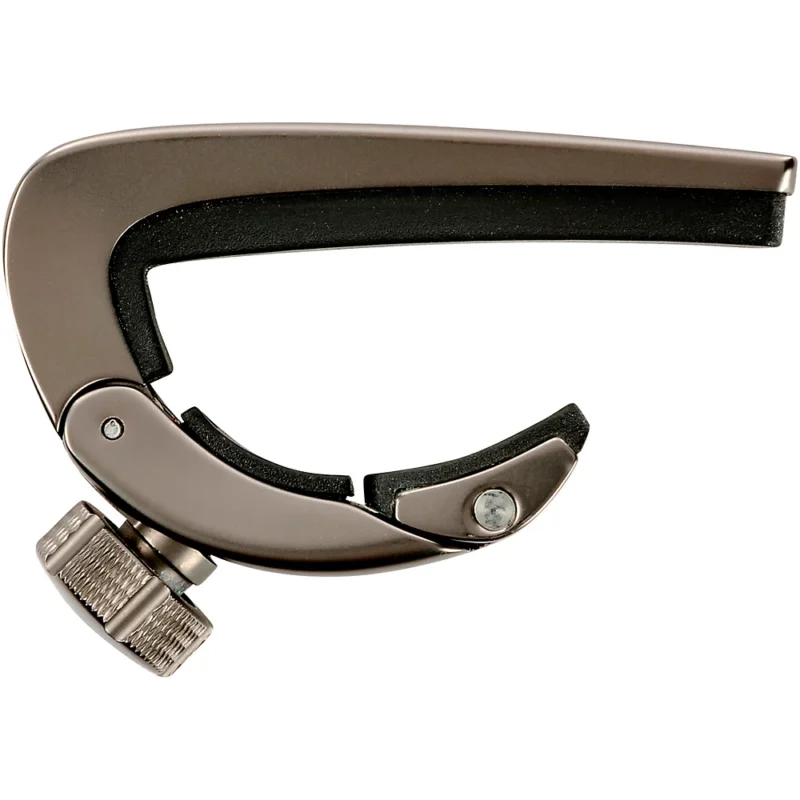
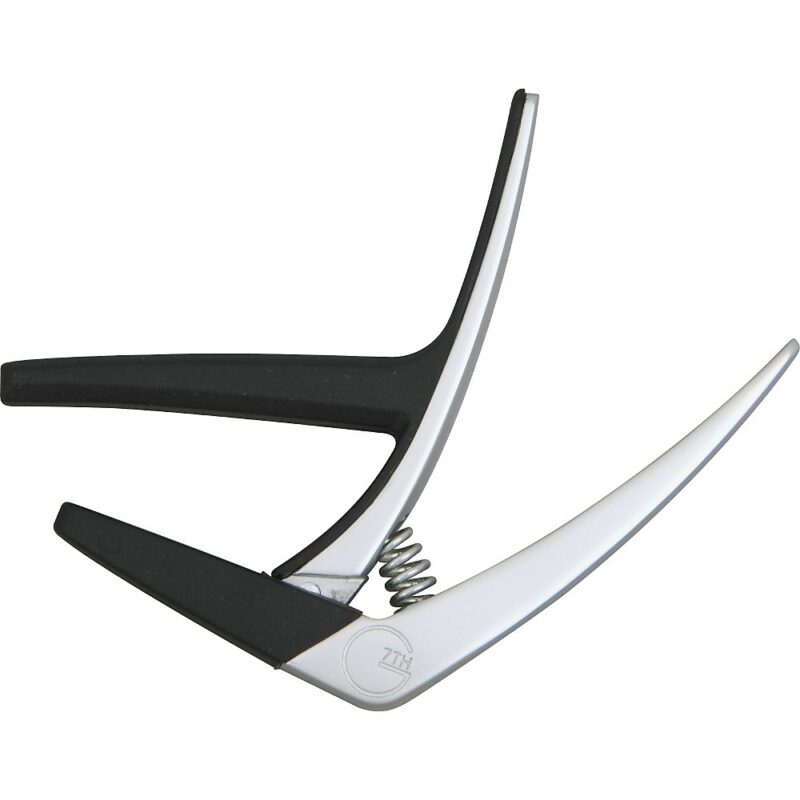
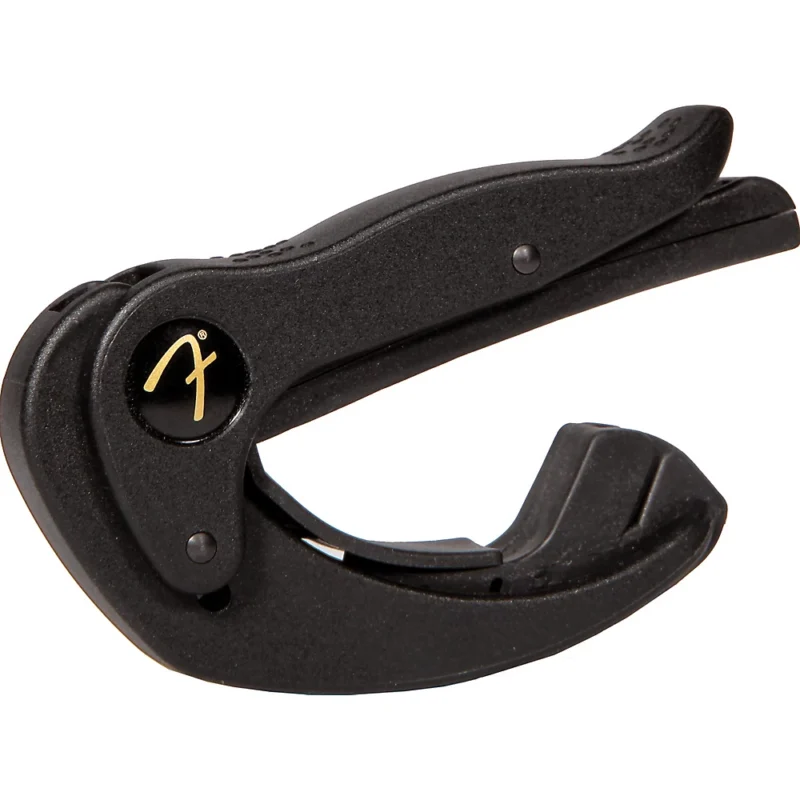

How To Fix Capo Guitar Tuning Problems
Tuning Your Guitar With the Capo On
Here’s a procedure you can use if your capo is not an adjustable one:
- Tune your guitar without the capo on.
- Put the capo in the position you want it.
- Fine tune the guitar again.
- (optional) Move the capo 2 -3 frets and re-check the tuning.
A faster way is simply to place the capo on the guitar first and tune it from there. Just note that tuning this way can place extra tension on the strings at the nut, and there is a chance you could break one of the higher strings.
How Do You Adjust the Capo Tension?
Adjustable capo’s normally have a thumb-screw mechanism or an adjustable rubber boot to allow you to change the tension.
By looking at the gap between the back of the capo and the arm on the front, you can see how much tension will be placed on the strings once it is in place.
There are 3 possible ways to adjust the tension, depending on what type of capo you have.
1. Screw Adjustment
On capos with a set screw, you will find they clip into place on your guitar without using a spring. The tension is purely adjusted with the set screw until you can feel the capo clip firmly on your guitar neck without bending the strings lower than the nearest fret.
When the tension is set correctly you should be able to easily clamp the capo on the guitar neck using only your index finger.
2. Rubber Boot Adjustment
The rubber boot will be thicker on one side than the other, so just slip the boot off, and reverse it to make the gap larger or smaller.
3. Bending the Arm
With an aluminium capo, it is possible to hold the spring-loaded arm at each end, and gently bend it to adjust the gap.
Note: Guitar necks get thicker as you move toward higher frets. If your capo is set for the lower part of the neck, it could be too tight further up the neck causing your guitar to sound out of tune.
Adjusting the Neck With the Truss Rod
If your guitar has the neck bowing down in the center (away from the strings), then you need to tighten the truss rod to straighten the neck.
If you place a capo on the first fret and hold down the 6th string at one of the highest fret, you should only see a gap large enough for a business card between the frets and the string at the 8th fret.
If the gap is too large, then turn the truss rod clockwise 1/8th turn and check again. Repeat this until the gap is correct.
Change the Action On Your Guitar
As well as a truss rod adjustment, your guitar strings could be too high off the fretboard (the action), and could need adjustment.
Unless you are experienced with this, or have a cheap guitar that you don’t mind learning on, it’s a good idea to take your guitar to a guitar tech to do this for you.
They can also advise you if this is a problem on your guitar, and save you time and money if the action is already acceptable.

